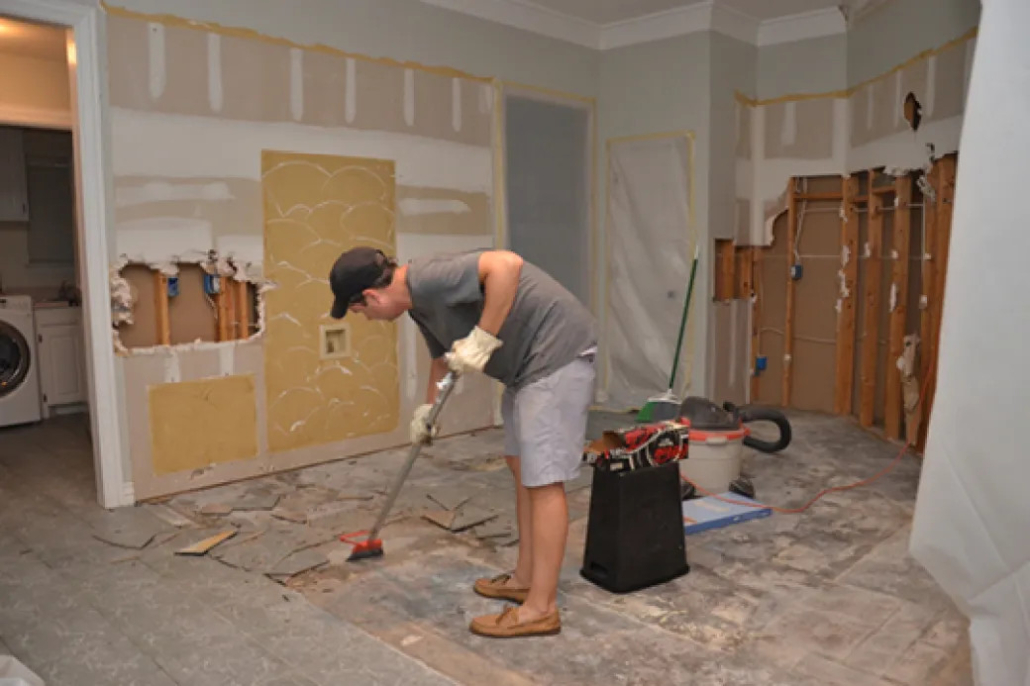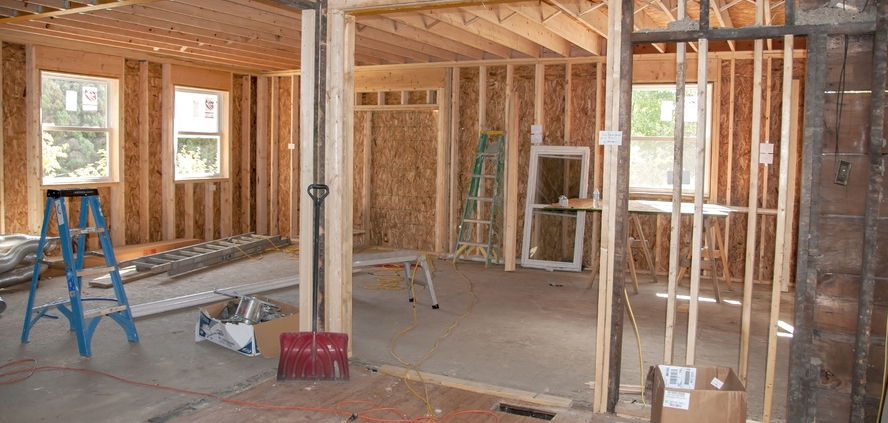Why do restoration experts rely on thermal imaging cameras for accurate inspections?
Restoration experts rely on thermal imaging cameras because this technology allows them to conduct rapid, non-destructive inspections that reveal problems invisible to the naked eye. A thermal camera doesn’t see moisture; it sees temperature differences. This ability is incredibly valuable because wet materials, missing insulation, and even faulty electrical circuits all have distinct thermal signatures. By using these cameras, an expert can instantly spot a cold patch on a wall indicating a hidden leak or a hot spot signaling an overloaded breaker, turning what used to be a process of guesswork and demolition into a precise, data-driven science.
This technology is a game-changer for property diagnostics. Home restoration contractor information detailed here is based on industry-standard practices and field experience, explaining not just what thermal imaging is, but why it has become an indispensable tool for any accurate and thorough property inspection. Understanding how professionals use this equipment can help homeowners appreciate the level of detail required to truly assess the health of their home.
The Science Behind How Thermal Cameras Work in Restoration
A thermal imaging camera, also known as an infrared (IR) camera, detects the infrared energy that is emitted by all objects. The camera then converts this infrared data into an electronic image that shows the apparent surface temperature of the object. This image, called a thermogram, is a visual map of heat.
In the context of restoration, this is incredibly useful because of a simple principle: evaporation causes cooling. When a building material like drywall or wood gets wet, the moisture begins to evaporate, which causes a subtle drop in its surface temperature. A high-resolution thermal camera is sensitive enough to detect these small temperature differences. The thermogram will display these cool, damp areas in shades of blue and purple, which stand out clearly against the warmer, drier surrounding materials shown in yellows and reds. This allows an inspector to instantly identify potential moisture issues without ever touching the wall.
Key Applications in Property Restoration
The ability to see temperature opens up a wide range of diagnostic possibilities for a trained restoration expert.

Pinpointing Hidden Water Intrusion
Many of the most destructive water issues are slow leaks that go unnoticed for months. A failing window seal, a small breach in roof flashing, or a pinhole leak in a pipe can allow water to seep into a structure, saturating insulation and wooden framing long before a visible stain appears. A thermal camera can trace the path of this moisture, often leading the inspector directly to the source of the leak. This allows for a precise, targeted repair instead of a large, disruptive search.
Bonus Tip: One of the best times to use a thermal camera to check for roof leaks is in the evening after a clear, sunny day. The dry parts of the roof will cool down quickly after sunset, but any wet areas in the underlying structure will retain the sun’s heat longer and will show up as distinct warm spots on the thermogram.
Mapping the Full Extent of Water Damage
After a major water event like a burst pipe or a flooded basement, the visible water is often just the beginning. Water wicks up drywall, travels along floor joists, and seeps under baseboards. A thermal camera allows a technician to create a complete “moisture map” of the affected area, showing exactly which materials are wet. This is essential for ensuring that all saturated materials are identified and either dried or removed, which is the only way to prevent secondary problems like mold growth and wood rot.
Conducting Energy Audits and Finding Insulation Gaps
Beyond water damage, thermal imaging is one of the most effective tools for conducting a home energy audit. By creating a temperature difference between the inside and outside of a home, an inspector can use the camera to literally see where energy is being lost. The camera will reveal:
- Cold spots on walls or ceilings where insulation is missing or has settled.
- Air leaks and drafts around windows, doors, and electrical outlets.
- Inefficiencies in the HVAC system’s ductwork.
Identifying these issues allows homeowners to make targeted improvements that can significantly lower their heating and cooling costs.
Locating Potential Electrical Issues
Overloaded circuits, failing breakers, and loose electrical connections all generate excess heat. A thermal camera can instantly spot these hot spots, which are invisible to the naked eye. This can help identify potential fire hazards before they become a serious danger.

Interpreting the Images: More Than Just Pointing and Shooting
The thermal camera is a powerful tool, but its true value is in the hands of a certified and experienced technician who knows how to interpret the images correctly. A cold spot on a wall is not always water. It could be a metal stud, a draft from an unsealed outlet, or a section of plaster that is a different thickness.
This is why professionals always use a two-step verification process.
- Find: Use the thermal camera to quickly scan large areas and identify thermal anomalies.
- Verify: Use a moisture meter to physically test the suspicious areas and confirm the presence and quantity of moisture.
Industry data shows that this combined approach increases the accuracy of moisture detection by over 90% compared to a visual inspection alone.
Comparing Inspection Methods
The use of thermal imaging represents a major leap forward from traditional inspection techniques.
| Inspection Method | What It Can Detect | Key Limitations |
|---|---|---|
| Visual Inspection | Obvious water stains, visible mold, peeling paint, pooling water. | Cannot see behind walls, under floors, or inside ceilings. It is a reactive method that only finds damage after it has become visible. |
| Thermal Imaging Inspection | Temperature differences that indicate hidden moisture, insulation gaps, air leaks, and electrical hot spots. | It is a diagnostic tool that identifies anomalies. Findings, especially moisture, must be confirmed with a secondary tool like a moisture meter. |
Things to Consider Before a Thermal Inspection
For a homeowner, understanding a few key factors can help you get the most out of a professional thermal inspection.
The Inspector’s Certification and Experience
The ability to correctly interpret a thermogram is a learned skill. Look for a company whose technicians are certified in thermography (e.g., a Level I Thermographer). This certification means they have been trained in the science of infrared energy and the proper operation of the equipment.
The Importance of Environmental Conditions
For some applications, particularly energy audits, the conditions need to be right. For the best results in detecting heat loss, there needs to be a significant temperature difference (at least 15-20°F) between the inside and outside of the home.
- Bonus Tip: To prepare your home for an energy audit, close all windows and doors for several hours beforehand. Turn off any fans (including bathroom and kitchen vents) and try not to run appliances that generate heat. This creates a stable indoor environment, which makes the thermal patterns of heat loss much clearer.
It’s a Diagnostic Tool, Not X-Ray Vision
It’s a common misconception that thermal cameras can “see through walls.” They can’t. They only read the temperature of the surface they are pointed at. A trained expert uses their knowledge of building science to interpret those surface temperature patterns and deduce what is likely happening behind the surface.
Common Questions People Ask About Thermal Inspections
Can thermal imaging see through walls?
No, it does not see through solid objects. It reads the temperature of the wall’s surface. An experienced operator then interprets the temperature patterns on that surface to diagnose potential issues that are happening behind it.
How accurate is it for finding moisture?
It is extremely accurate for finding the thermal anomalies that are the telltale sign of hidden moisture. However, it must be paired with a moisture meter to confirm that the cold spot is, in fact, caused by water.
Is the technology safe for my family and pets?
Yes, it is completely safe. A thermal camera is a passive device. It simply detects the infrared energy that is naturally emitted by all objects. It does not produce any radiation or send out any signals, making it perfectly safe to use in an occupied home.
Why not just use a cheap smartphone attachment?
While those devices can be fun for hobbyists, they are not a substitute for a professional inspection. Professional-grade thermal cameras have much higher resolution and thermal sensitivity, allowing them to detect very subtle temperature differences that a cheaper device would miss. More importantly, when you hire a professional, you are paying for their expertise in interpreting the images correctly.
Does it work in all weather conditions?
Yes, for moisture detection, the principle of evaporative cooling works year-round. For energy audits, the inspection can be done in either winter (looking for heat loss) or summer (looking for cool air loss from the A/C). The key is having a temperature difference between the inside and outside.
The Value of Data-Driven Inspections
Restoration experts rely on thermal imaging cameras because they provide fast, accurate, and non-destructive data. This technology allows them to move beyond what they can see with their own eyes and to understand the full scope of a problem. For a homeowner, an inspection that uses thermal imaging provides peace of mind, knowing that the assessment of their property is based on verifiable data, not just guesswork.
If you are concerned about a hidden leak or the extent of water damage in your home, it’s best to work with a team that uses this advanced technology. Certified professionals, like the team at Prestige NW Restoration, incorporate thermal imaging into their standard inspection process to ensure nothing is missed. For a thorough and accurate assessment of your property, they can be reached at (360) 334-3624 or by email at dispatch@prestige-nw.com.
Reviewer: Matthew Moore brings over 15 years of experience in residential renovation marketing. The review provided helped shape this content to better connect with homeowners seeking reliable, high-quality restoration and home improvement services



Leave a Reply
Want to join the discussion?Feel free to contribute!